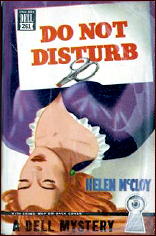Wed 29 Mar 2017
A Movie Review by Jonathan Lewis: THE SHE BEAST (1966).
Posted by Steve under Horror movies , Reviews[3] Comments
THE SHE BEAST. Miracle Films, UK, 1966; Europix Consolidated Corp., US, 1966, as She Beast. Barbara Steele, John Karlsen, Ian Ogilvy, Mel Welles, Jay Riley, Richard Watson. Screenwriter-director: Michael Reeves.
Sometimes, flying by the seat of your pants has long-term consequences. Say, for instance, when you take part in a lynch mob and, without following proper procedures and taking necessary precautions, you drown a witch in a lake. Maybe it’s a pardonable sin.
After all, you’re just a peasant and what do you know. I mean: how could you possibly be aware that the deceased witch will, some two hundred years later, come back to life? Well, other than the fact that, just before dying, she tells you that she’ll come back and have her revenge.
That’s the premise of The She Beast, a rather clumsy and at times overwrought horror film starring the legendary British scream queen Barbara Steele. She portrays Veronica, the new wife of an Englishman named Philip (Ian Ogilvy). Vacationing in Transylvania on their honeymoon, the couple first has to deal with a broken down car, then a perverted innkeeper.
Things get worse. Veronica dies in a car accident. This leaves Philip distraught. But he, with the help of an elderly Von Helsing (John Karlsen), soon learns that Veronica isn’t dead. Her soul has been temporary been taken by the one and only she beast, the ugly witch that the local peasantry killed centuries ago.
And that’s about it. That’s the plot in a nutshell. There’s some creepy Gothic imagery at work here, but by and large, the performances aren’t particularly good. Steele isn’t in the movie for very long, although her screen time is memorable and she is undoubtedly the main attraction.
Also look for the bizarre scene in which a sickle gets thrown to the ground and lands on top a hammer. The Soviet symbolism is obvious. Given the fact that the local police are all bumbling communist apparatchiks, I’d say there was some not too subtle mockery of communism going on in this otherwise truly mediocre European horror film.
